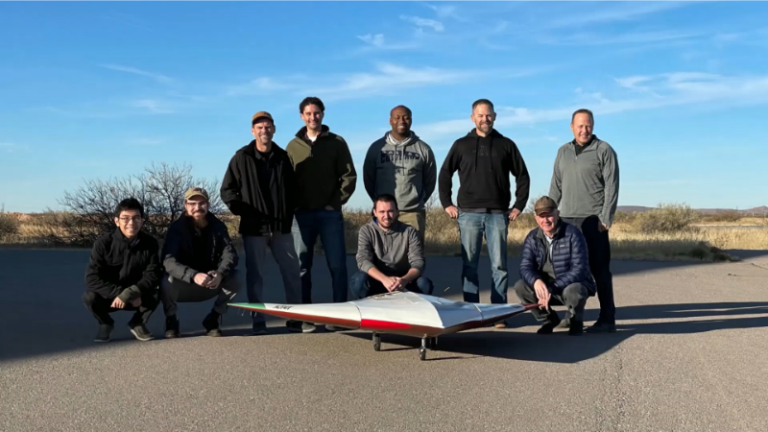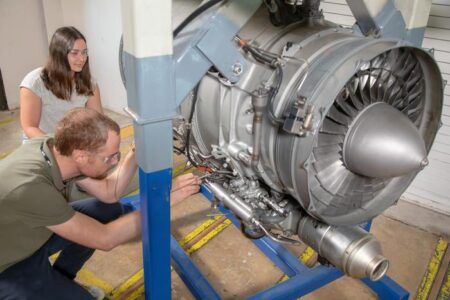Researchers in the USA have for the first time successfully demonstrated the use of active flow control in an aircraft with no tail.
Active flow control (AFC) allows an aircraft to be as smooth and sleek as possible, making it safer for the military to fly in dangerous areas where radar scans the sky for sharp edges. It could also be used to make commercial airplanes more fuel-efficient by removing existing steering parts that create drag.
While conventional aircraft rely on protruding fins to enable steering, the tailless design is controlled by active airflow – in which jets of air are blown onto different surfaces of the aircraft body, corresponding to which direction the aircraft is moving.
The research team’s jet-powered sub-scale aircraft, which has a 7.5ft (2.2m) wingspan and no tail uses both conventional steering controls and a novel implementation of AFC.
US defense research agency DARPA is also running a project to develop an X-plane that will demonstrate the principles of active flow control.
The researchers at Illinois Institute of Technology (Illinois Tech) were led by David Williams, professor of mechanical and aerospace engineering. Partners on the project include researchers from the US Air Force Academy, the Office of Naval Research and UAV developer Astrium.
Williams explains how active flow control (AFC) works and its potential impact on the design and operation of aircraft in this article.
The group launched the aircraft from the Pendleton Unmanned Aircraft System (UAS) Range in Oregon last October for two nine-minute flights that demonstrated the system.
For each flight, a pilot launched the jet using conventional flight controls. Then, midflight, they switched control to a second pilot who operated the active flow control system.
In the first test, the team found that the active flow control system actually provided more power than had been predicted from wind tunnel tests.
“In engineering, it never works that way, you almost always get less than you were hoping for, but in this case, we got more,” said Williams. “The first day was very dramatic. It was very strong and very scary. If the jet gets too far over on its side, it could spin out of control. In fact, it did go over to 90 degrees, but it recovered.”
Once the pilot gained confidence in their ability to control the craft, they executed roll and pitch maneuvers to test the active flow control’s ability to steer the jet at steep angles.
Another advantage of active flow control is that it has the potential to allow for maneuvers that are impossible with conventional controls, including very fast turns and the ability to fly at angles that would cause conventional controls to become ineffective.
Williams says the unexpected power of their system has increased his confidence that they will be able to do these more advanced maneuvers with this jet.
For their second flight, Williams reduced the power to the active flow control system for a safer, more stable flight, allowing them to collect more data about how the active flow control was operating.
The active flow control is implemented using a patent-pending Coanda valve designed by Williams and his students, and this was their first chance to show the design’s success on an aircraft.
Williams says the team will be conducting more flight tests, gradually building toward using the active flow control during takeoff and conducting more extreme control maneuvers.
“We’ve made the breakthrough that I was looking for,” says Williams. “Now future tests will start adding to the accomplishments and confidence in the airplane’s design.”
The research will be presented at the 2023 AIAA Aviation conference in San Diego during June.
This article can be read in its original format here.





